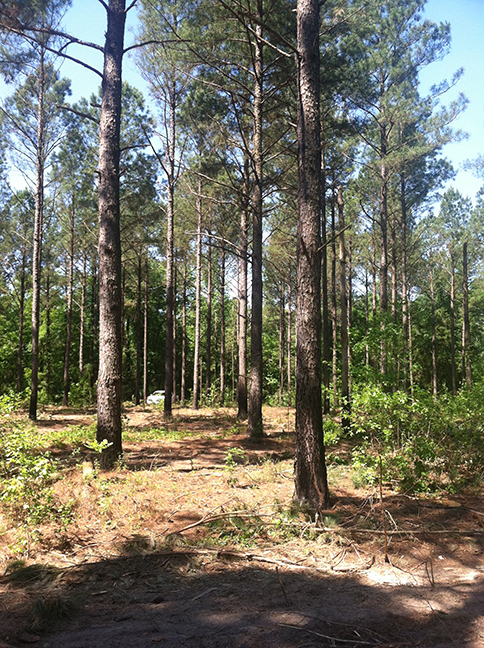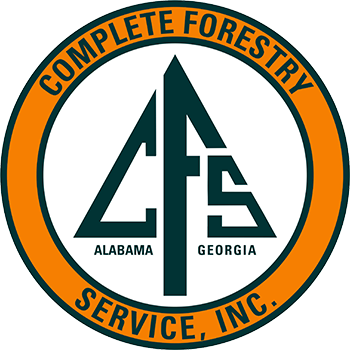Forest Management
In order to increase recreational and aesthetic opportunities, as well as maximize revenue per acre, it is essential that landowners have a management plan for their property. The following are services that Complete Forestry can provide to you, the landowner, to assist in effectively managing your property.
- GPS Mapping – With the use of a Global Positioning System, accurate and detailed maps of a property can be produced. These maps can show such features as existing roads, area types and boundaries, creeks, food plots, acreage, etc. Current maps are a vital component to any management plan.
- Forest Inventory and Analysis – By plot sampling or “cruising” the timbered areas, we can accurately determine how much and what type of timber is present. From the data gathered, we can develop growth and yield models and establish harvest recommendations for the timbered areas or “stands”.
- Timber Appraisals – Once an inventory and analysis has been performed by determining the amount and type of timber present in a stand, we use current market prices to place a dollar value on the present timber.
- Forest Management Plans – After all mapping and inventory data has been collected, evaluations can be made to determine the best management prescription for each stand on the tract. All of this information is then compiled into a formal written management plan.
The importance of having a written management plan is to help the landowner keep track of what has been harvested, when it was harvested, and what is to be harvested next, in order to maintain healthy stands of timber. A written management plan can also include what to do after and between the harvests such as prescribed burns, chemical treatments, fertilization, etc.
Timber Harvest and Re-Forestation
Once a management plan has been established the following services we provide enable our landowners to put the management plan into action.
Timber Sales
Whether it’s thinning a pine plantation for the first time or a final harvest of mature sawtimber, Complete Forestry can handle the sale and look out for the landowner’s best interest. We can also assist the landowner in determining the best way to sell the timber either by lump sum or on a per unit basis.
Final Harvest – When the remaining trees in a stand have reached maturity, it is usually best to harvest them before they can be destroyed by disease or wind.
Thinning Operations – In nearly all planted stands and most natural stands of pine, it is necessary to thin the trees in the stand to avoid crowding which causes them to stop growing (stagnation). Stagnant stands become very vulnerable to attacks by Southern Pine Beetles and Ips Beetles. Thinning also allows the opportunity to remove unhealthy trees containing cankers caused by fusiform rust. Most stands are thinned two to three times before final harvest.
Marking timber – Before a thinning operation takes place, we recommend marking the trees to be harvested with tree marking paint. This will better enable the loggers to harvest only what is necessary to promote growth and improve the forest health. Marking prior to thinning results in a more uniform harvest with less damage to residual trees.
Logging Inspections – During the harvest, we make regular inspections by visiting the logging operation to ensure that all terms of the contract are being honored.
Re-Forestation
Site prep and forest regeneration -After the final harvest of any type of stand, it is critical to get those acres back into production as soon as possible to achieve maximum revenue over time. Preparing the site to be planted / replanted is very important to getting the stand off to a healthy start. Site prep can be done mechanically and / or chemically depending on a number of variables. The main objective in site preparation is to provide optimum conditions to accommodate reforestation efforts as well as provide optimum conditions for each seedling to establish itself in its first and most critical year.
Prescribed Burning
Burning is probably one of the most inexpensive and effective means of managing a healthy forest. The benefits of regular prescribed burning include fuel reduction which reduces the risk of wildfire, disease control, insect control, competition control, and wildlife management.

Follow Us!